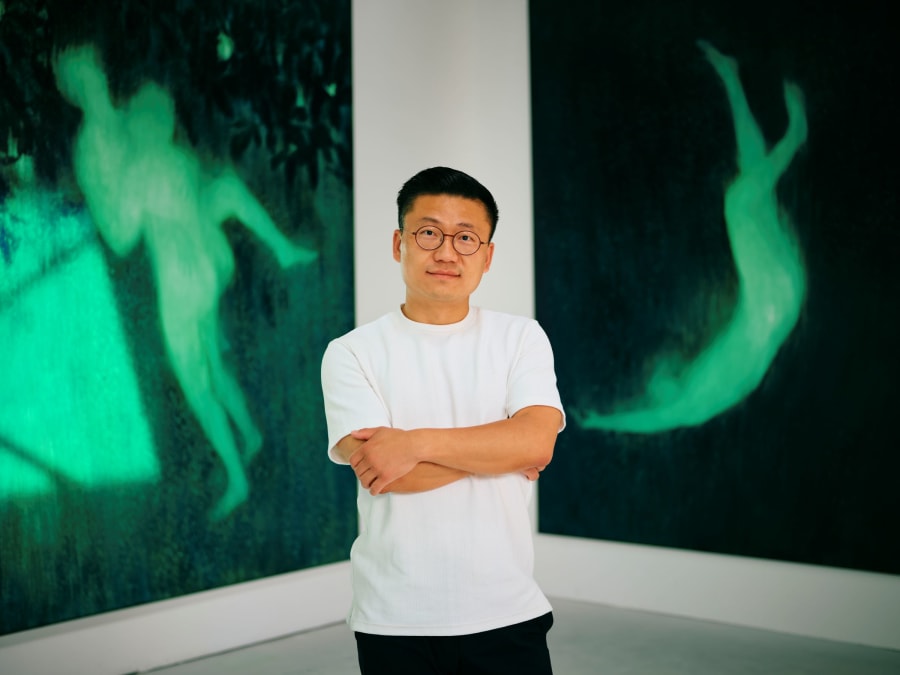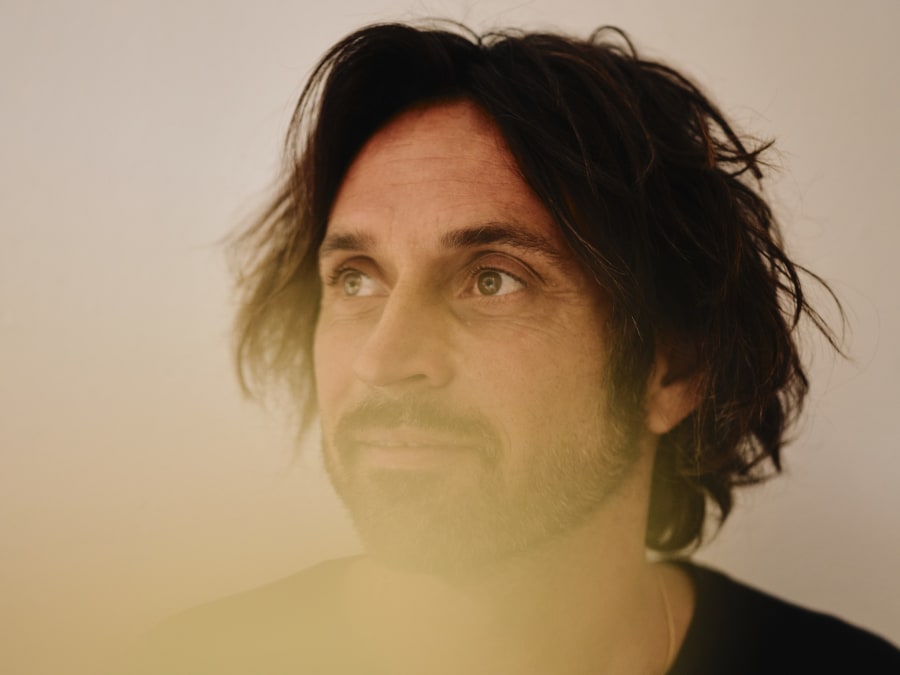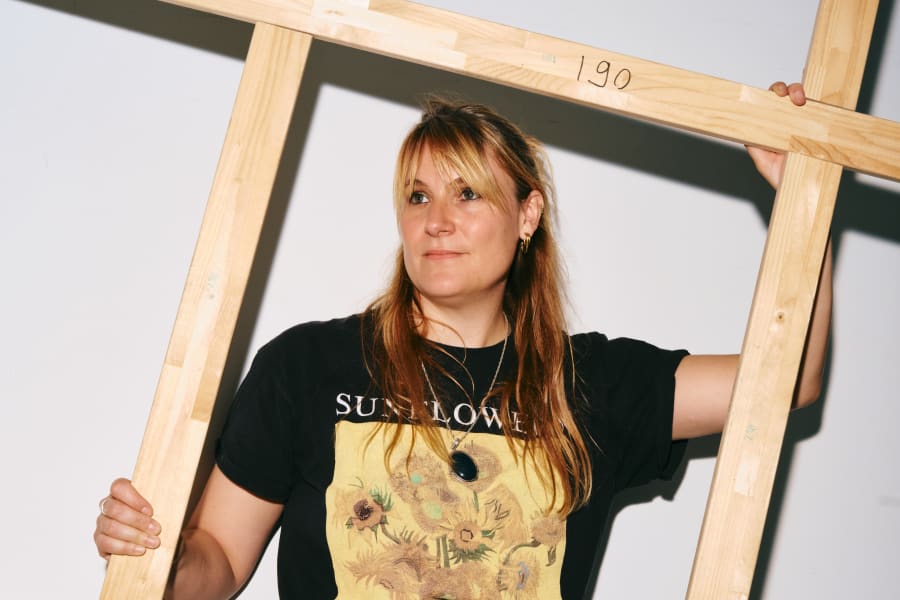In collaboration with the Centre Pompidou
To dive into the work of Bianca Bondi, is to enter enchanting multisensory spaces, where nature re-stakes its claims. In Paris, that’s about discovering a salt fountain with basins full of blue- and lilac-colored solutions. On the island of Porquerolles, it’s a case of admiring a 12-meter-long whale skeleton, made of resin, overturned and corroded by salt. In Busan, it’s about approaching white beds where reeds seem to have grown in the middle of mattresses, while in Dallas, it means circulating around fragments of abandoned advertising panels, which evoke some sort of wreckage.
For about ten years now, the South African visual artist has taken her site-specific installations around the world. The works are impregnated by her own mystical beliefs – what this shaman-artist considers ‘auras of benevolence.’ Natural elements, domestic objects, and chemical reactions meet to outline a true archaeology of the future.
A finalist for the Prix Marcel Duchamp this year, Bondi will present her work alongside the three other nominees at the Musée d’Art Moderne de Paris. Her project is titled Silent House (2025) – an entire room filled with used furniture, plants, and salt basins, bearing the traces of the passage of time. A synthesis of the approach she has pursued since the end of her studies in 2012, this ambitious installation contains all the essential ingredients of the artist’s work.
It all starts with the home. A passionate collector, Bondi is fascinated by the history and aura of secondhand objects, which she hunts for at flea markets or via online listings. ‘When I’m invited for a project, I often look for objects that will become key symbols for understanding what I have in mind,’ she explains. ‘I bring them with me to the exhibition venue, and I mix them with other elements I find on site.’ A sort of poetry, at times cryptic, resonates through the shells, coins, dishes, and books that make up her hybrid compositions, which are sometimes housed within Plexiglas boxes. Cupboards – a recurrent feature of her recent installations – become in her eyes ‘magical spaces,’ like portals to another dimension, which remind her of her childhood dreams.
In 2019, for the Lyon Biennale, Bondi staged an ambitious reconstruction of a salt-covered kitchen in one of the Fagor factory warehouses. An acclaimed work that marked a turning point in her career: ‘It was a moment of great personal transformation that also brought me a lot of visibility. Six years later, at the Musée d’Art Moderne de Paris, I find myself at a stage where I need to leave the house, to destroy it completely to rebuild it differently.’ Damp wallpaper stained with mold, a clawfoot bathtub, a rusted metal bed frame, and a charred wardrobe, fixed vertically to the wall, come together in this ‘house’ that the artist has turned upside down. A silent house that could be read, through a psychoanalytic prism, as an embodiment of the unconscious.
From the ceiling of a room hang bouquets of medicinal plants – another key element within the artist’s installations. A practitioner of Wicca magic since childhood, and fascinated by neo-pagan rites and New Age tendencies, Bondi integrates these plant elements in order to revive our relationship with nature. Over the years, we have encountered ivy, orchids, and also very often amaranths in her work. She appreciates the latter ‘for their role in the funeral ceremonies of ancient Egypt and for their aesthetic qualities. There is a certain sadness in the way they fall and seem to flow like tears...’
Profoundly ecological in her approach, the artist insists on using, as far as possible, plants endemic to the regions where she exhibits. During her recently-ended year-long residency at the Villa Medici, Rome, she developed the idea of ‘rewilding’ the Roman institution by presenting an installation based on plants growing in the Lazio region. She created a sweet perfume to diffuse throughout the space and built a sort of reliquary filled with vases, inspired by ancient Rome. For Bondi, nature often chimes with contemplation: after starting out as a painter, she took her first steps in installation through the creation of small altars. ‘I’ve always loved looking at altars, these spaces designed for something greater than us, for the gods.’ The internal garden on show this summer at the Villa Medici illustrates the point: Bondi uses the exhibition space as a bridge toward the natural and spiritual worlds.
But the cornerstone of the South African artist’s work is undoubtedly transformation. An heir to Arte Povera, Bondi brings a very contemporary mystical and ecofeminist force, employing ‘vulnerable and volatile’ materials and elements that allow her to initiate changes through natural or chemical reactions. ‘For a long time, I anticipated how my works were going to change by subjecting them to everything they shouldn’t be subjected to: leaving them in the sun, or in very humid places...These experiments were very stimulating. They led me along unexpected paths, while making me accept the finality of the elements I was altering.’
Today, salt has become one of the main protagonists in the artist’s work. In 2011, she realized its potential when she discovered mountains of salt in a Cameroonian forest which had previously been used during ceremonies. It immediately evoked for her the circles of magical protection but also the purification rites that she saw for herself. ‘I’ve been following the same process for years: when I recover secondhand objects, the first thing I do is immerse them in saltwater baths. This makes them more vulnerable, more ready to react, and the first layers of oxidation begin to appear.’ Between copper vases and latex jackets, many objects in Bondi’s studio have been tested with salt, and now bear the traces of an alteration that quickly escaped her control.
Recently, the artist started burning wardrobes and crucifixes. It is an ancestral and purifying gesture, used in many cultures and civilizations, and very often in witchcraft. ‘I think it was my practice of magic that allowed me to discover art, which then became an extension of magic and took over,’ she concludes. ‘But today, I feel the need to bring magic back into art.’ Moreover, if the artist now works with craftspeople to create certain pieces – tapestries, glass sculptures – she increasingly distances herself from scientists, wishing to preserve the profoundly intuitive and experimental aspect of her approach. Bondi thus celebrates the inevitable transformation of the living, and in so doing puts humans face to face with their own shortcomings.
This article is part of a collaboration with the Centre Pompidou for the Prix Marcel Duchamp 2025. View it here on the Centre Pompidou website.
Bianca Bondi is represented by mor charpentier (Paris, Bogotá).
Prix Marcel Duchamp
Musée d’Art Moderne de Paris
From September 26, 2025, to February 22, 2026
Matthieu Jacquet is a journalist based in Paris.
English translation: Art Basel.
Caption for header image: Bianca Bondi, photographed by Guillaume Blot for Art Basel and Centre Pompidou.
Published on September 18, 2025.


